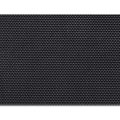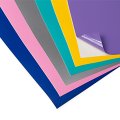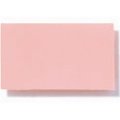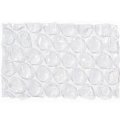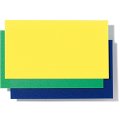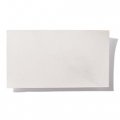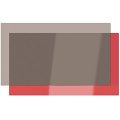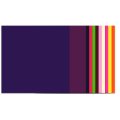Coloured Adhesive Film
Information about Color Adhesive Film
Colour adhesive films are, as the name suggests, coloured matt or glossy and self-adhesive. Whether in basic colours such as red, blue and yellow or in striking neon colours such as neon pink or neon green, we offer a selection in all colours of the rainbow.
Coloured self-adhesive films are the material from which advertising lettering can be cut, e.g. for buses, trams or taxis. Another important field of application is the production of signs or light boxes for indoor and outdoor use. There are transparent, translucent (translucent) and opaque (opaque) films with different lifetimes for the various applications.
Oracal colour adhesive films withstand temperatures in the Central European standard climate permanently and can be exposed to temperatures of up to 80 °C for short periods of time. The weathering resistance values for the various films (according to FINAT FTM 01), subject to aging and storage conditions, are given for each film.
The coloured adhesive films consist of monomer or polymer plasticized PVC (polyvinyl chloride). Polymer plasticized films are considerably more weather resistant than their monomer plasticized relatives. Both types are equipped with a solvent-free acrylic adhesive. However, mixed bonding of monomer and polymer plasticized films is not recommended.
Warm water with detergent or methylated spirits can be used to clean the bonded films. Glossy films are generally easier to clean than matt films. Car wax, for example, can be used for better preservation. Oracal colour adhesive films are not resistant to organic solvents. If you have any questions about chemical resistance, we will be happy to send you a resistance table on request.
We recommend storing whole rolls for no longer than 2 years if possible. Self-adhesive films are stored optimally in a cool and dry environment, upright and protected from UV radiation.
Processing:
In the unbonded state, all colour films can be screen printed. When selecting the printing ink, the ink supplier should be informed of his own requirements regarding the design and quality of the film material in order to ensure that the ink used does not attack the film. In principle, only inks with the lowest possible solvent content should be used. During processing, attention must be paid to intensive and complete solvent evaporation.
The Modulor grades available from stock do not have a perforated edge. If they are equipped with a paper cover of at least 120 g?/?m², processing in the cutting plotter is very easy. The foils are best processed at temperatures between +5 and +30 °C. The film can also be used in the cutting plotter. Apart from a few exceptions, self-adhesive films can be bonded wet without any problems. Wet adhesion is particularly recommended for larger surfaces, as the film can be readjusted due to the low initial adhesion to the moist surface. The remaining residual moisture diffuses outwards over time and evaporates. Depending on the ambient temperature, the full adhesive strength is only reached after a few days.
If desired, the strongly adhesive films can be removed quite well from the substrate with heat. The film is heated with a hairdryer, carefully loosened at one corner and slowly removed from there under a further hairdryer in order not to damage the substrate, e.g. car paint. Depending on the substrate, adhesive residues can be removed with solvents or cleaning agents, e.g. industrial cleaner.
Bonding:
The waterproof carrier material (e.g. the window) must first be completely clean, i.e. free of grease and dust, and then evenly moistened with a spray bottle. The covering paper of the foil is first removed only at one corner and positioned on the substrate at the corresponding corner. Then gradually peel off the remaining cover paper at an acute angle and stick the film from one corner to the other bubble-free on the carrier surface. Rubbing is best done with a squeegee, whereby the water under the film is pushed away to the side. Use a needle to pierce and smooth any remaining bubbles.
When applying a large area to plates, do not remove self-adhesive films from the roll with excessive tension. If the tension is too high, the elastic film is stretched, relaxes again after gluing and thus curves the plate.
The use of transfer foil is recommended for finer motifs or lettering. Here it is also possible to work wet, but also dry. The motif is cut out of opacal colour adhesive foil with a cutting plotter or scalpel in such a way that only the foil is cut, but not the cover paper. Then it is "weeded" (removal of the remaining areas that are not to be transferred) and completely covered with transfer foil. Due to the higher adhesion of the transfer foil to the surface of the coloured foil, the lettering can now be completely lifted off the backing paper and pulled onto the carrier surface.
For this purpose, auxiliary lines are drawn on the absolutely smooth carrier surface beforehand, along which the motif is aligned when it is stuck on. Then the surface of the carrier material is evenly moistened with water and the transfer foil with the coherent motif is applied to one corner as described above and gradually pulled onto the other corner without bubbles. The use of a squeegee also makes sense here.
After approx. half an hour the connection is dry enough that the transfer foil can be carefully removed from the transferred motif at an acute angle. However, it takes a few days to completely dry out and unfold its full adhesive power.
On non-polar materials such as PE (polyethylene) or PP (polypropylene) sheets, self-adhesive films do not adhere as well as on highly polar materials. This fact should be taken into account when manufacturing signs that are exposed to the weather. For exterior signs, a PVC foam sheet (Forex) is the best choice, not only because of its UV resistance, but also because of its UV resistance.
